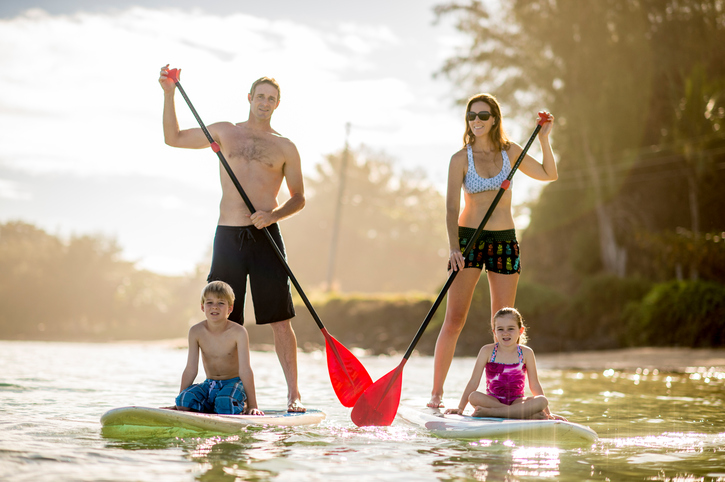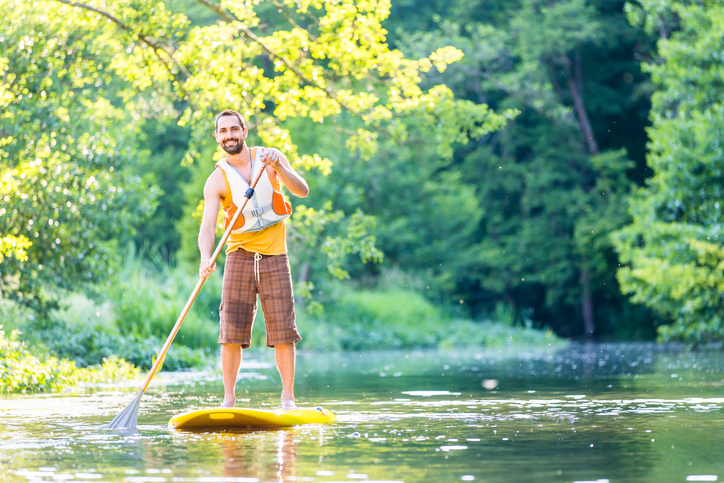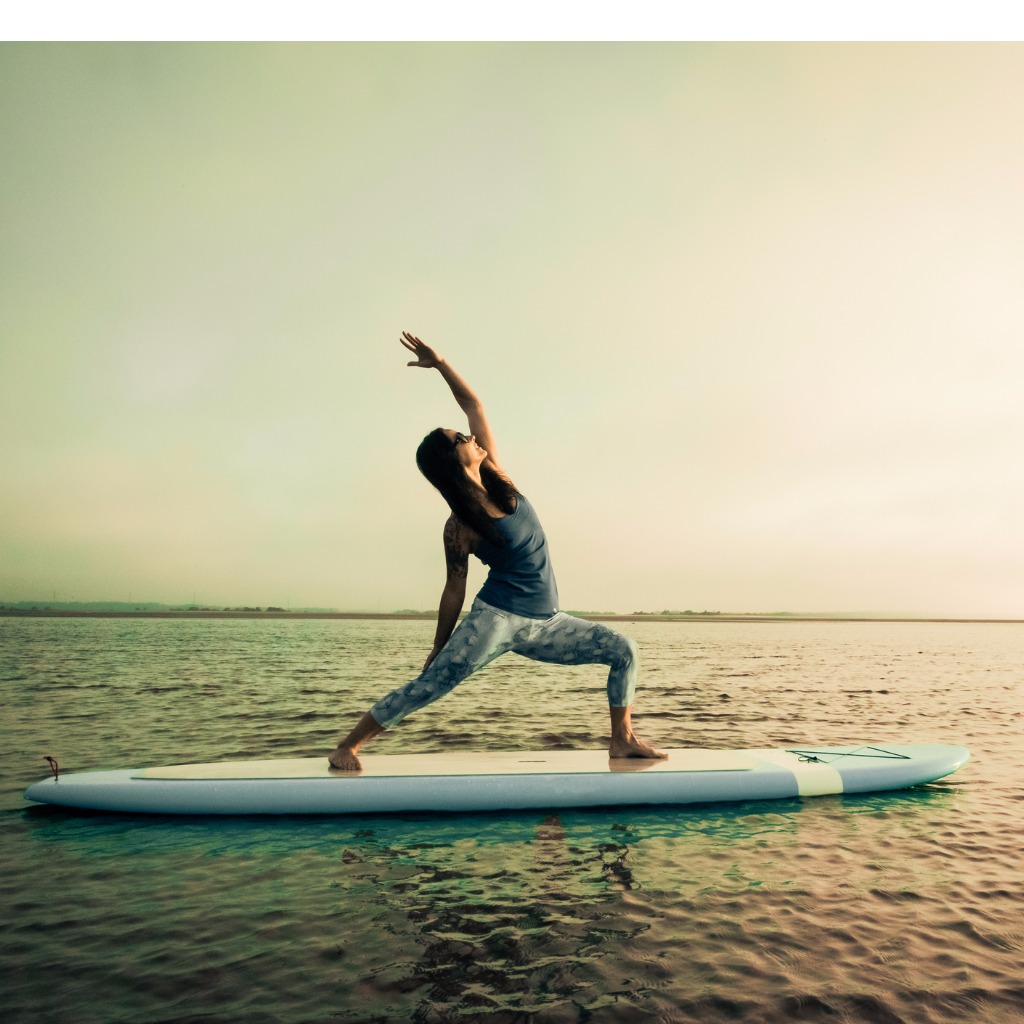You Had Me at SUP: What is Stand Up Paddle Boarding

You may not have heard of it, but Stand-Up Paddleboarding, or SUP, is one of the newest recreational activities sweeping across the coasts. Originally created in Africa hundreds of years ago, SUP has become something of a new sport, with many people finding it to be a fun and engaging way to exercise, enjoy the great outdoors, and even do yoga!
Imagine, yoga in the middle of the ocean! How cool is that?
Stand-up Paddleboarding gives you a full-body workout with the joys of the great outdoors. You can explore ponds and lakes, and even on the open ocean, provided the water is smooth enough.
But what is SUP? Read on.
The Basics
Stand-Up Paddleboarding can seem like a challenge at first, but it is actually easier than you may think. Using a long board that is essentially an oversized surfboard, you stand on top and use a long paddle to propel yourself through the water. If you pick a board that is big enough and properly sized for you, standing on it can be pretty easy. You’ll be surprised how stable it is.
To climb onto your board for the first time, we recommend starting in smooth, shallow water. Place your paddle onto the center of the board, creating a kind of rigger for your use. Then, climb onto the board in a kneeling position, using the rails to help guide you. Once on, remain kneeling until you find the center point of the board. The nose should be outside of the water and the tail should not sink too far under the surface.
Once you’ve found the center point and you feel reasonably stable, rise to your feet, one foot at a time. You may rock the board or even fall here--do not worry, finding balance is tough for anyone! When you stand, you are ready to start paddling!
SUP Stance
To paddle your board and take advantage of all it has to offer, you should assume a SUP Stance to ensure the most balance and stability available. Keep your feet about hips distance apart, parallel to each other. DO NOT stand on the rails on the side of the board.
Keep your toes pointed forward, with your knees bent and your back straight, balancing with your hips. Do not stare at your feet either--you will go where you are looking, and if you are looking down, you are more likely to fall. Instead, look ahead.
Paddling
Congrats! You’re standing and you are in a good stance for long-term SUPing! Let’s talk about the actual motion you’ll need to employ if you want to paddle with the best of them.
If you are paddling on the right side of the board, your right hand is lower on the paddle than your left, which is at the top. Switch them if you are paddling on the left. Keeping your arms straight, use your torso to twist rather than your arms. When you twist far enough, push down with the hand on top of the paddle. Pull your paddle out of the water, and repeat the process.
To go straight, alternate sides every 4 or 5 strokes, as needed.
Turning
There are actually several different methods you can use to turn on your paddleboard. You can do the simple “paddle on one side until you turn” technique, but you can actually do it two other ways as well. You can use your paddle like a rudder at the back of your board once you get good speed going, for one.
If you are stopped, you can also plant the paddle on the water floor, and pull your board in the direction you want with that as well.
Falling
Yeah, it’s gonna happen. You may take a plunge into the water when you least expect it. If you do fall, or you feel your balance waver, try to avoid falling onto the board so you don’t get injured.
If you find yourself separated from your board and paddle, retrieve your board first. That way, you can float on the board itself and go after your paddle using your hands.
Transporting
Stand-Up Paddleboards can be inflatable, and if you get one that is, transporting it is easy because it can be stored without air and rolled up. But if you have a stiff board, getting it to the ocean can be a challenge. You will have to tie it to the roof of your car to transport.
For short distance carrying, like from your car to the waterfront, you can use the built-in handle on the side of the board. For longer distances, carrying the board like this can be cumbersome and a strain on your muscles. For longer distances, we recommend carrying the board over your head. To do so, put the tail end of the board onto the ground. Taking the rails in either hand, walk with the board until your head is about at the middle, halfway between the front and back. Hold the board over your head from this point and walk.
Gear
You've decided that Stand-Up Paddleboarding is the sport for you! Now you need the gear to take advantage of it! Here's what you will need:
- Stand-Up Paddleboard: The most important part of your investment! Your choice of SUP board size and design will come down to your weight and skill level.
- Paddle: Your SUP paddle will be the second most important of your investment! Can't paddleboard without a paddle!
- Personal Floatation Device (PFD) : Stand-Up Paddleboards are technically classified in a number of states as vessels, and as such, need a personal floatation device or life jacket to operate.
- Leash: Not for your dog anymore! SUP leashes are typically sold separately, but they are invaluable for keeping your paddleboard from getting away from you after a fall.
